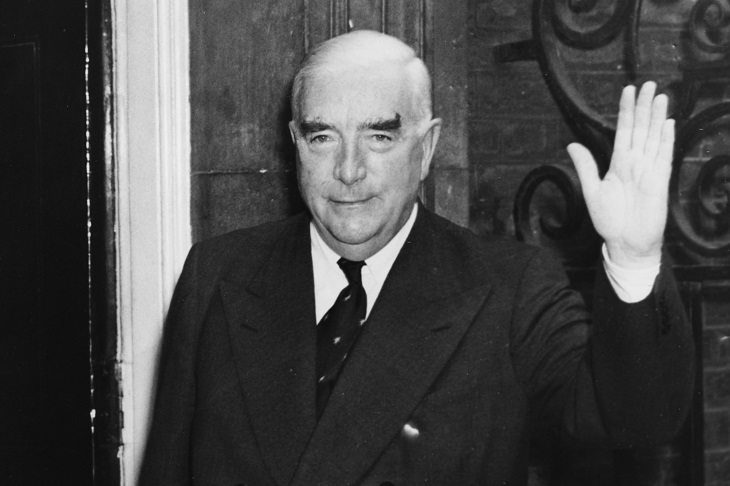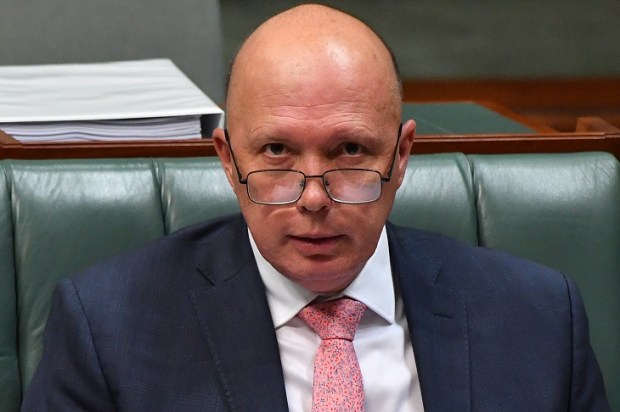Matthew Bach’s piece Menzies is dead. It’s time for the Liberals to forge a new path in The Age on June 17 was a disappointing contribution from a member of the party that Menzies founded. In Bach’s view, Australia’s longest-serving Prime Minister and founder of the Liberal Party of Australia was someone whose legacy isn’t worthy of reflection, did little in the way of nation-building and economic reform, and really should be consigned to the dustbin of history.
It’s quite clear that the Liberal Party nationally and particularly in Victoria needs to rebuild. No one would argue that the party should remain static and unresponsive to changes in society. But rebuilding requires reflection on the foundations of the Liberal Party, which is why Menzies is still relevant. Menzies shaped ideas in the grand tradition of Australian liberalism and, out of the political ashes of the United Australia Party, brought together disparate groups on the centre-right to establish Australia’s most successful political party.
Now of course it would be foolish to rest on the laurels of one’s history. The 23 years of Liberal government federally from 1949-72 is unlikely to be repeated, likewise the almost 27 consecutive years of Liberal government in Victoria from 1955-82. But an understanding of history, the successes, and failures, is essential to guide us in the future. Bringing together disparate groups on the centre-right of politics is precisely what needs to be done by the Liberal Party in Victoria, and Menzies cannot be dismissed in that task.
In that context, it is surprising and disappointing to read that a former history teacher and now Deputy Leader of the Victorian Liberal Party in the Upper House believes Menzies should be disregarded. You can’t imagine a Labor leader writing something so dismissive of their party heroes such as John Curtin, Gough Whitlam, Bob Hawke, or Paul Keating.
And then there’s the facts. What’s perhaps most depressing is that Bach’s article replaces history with fallacy. Bach claims Menzies ‘achieved comparably little economic reform’. Who created the Reserve Bank of Australia, negotiated the 1957 Commerce Agreement with Japan opening up trade with Asia, lifted the iron ore export ban, and laid the groundwork for the introduction of the decimal currency in Australia? Menzies. Coupled with the economic growth of the Menzies Era at 4.1 per cent and unemployment at around 3 per cent, the Menzies era was a time when jobs for Australians were plentiful, and the good times were rolling.
Continuing the myth-making, Bach claims the White Australia Policy was only dismantled after Menzies left office. Fact check, please! Menzies was hardly averse to a big Australia, arguing in 1943 that the ‘the greatest guarantee, not only of the safety of Australia but of its future material prosperity, would be a population of at least twenty million’ at a time when our population was only a touch over 7 million. During the Menzies era, Australia welcomed 2 million migrants. The Menzies government began to dismantle the discriminatory policies of White Australia, opening up migration to Europeans and people displaced after the second world war, including those fleeing Soviet Russia, abolishing the notorious dictation test in 1958, and breaking down racial prejudices by offering university places to non-European students under the Colombo Plan.
The idea that Menzies outsourced nation-building to Labor is historical nonsense. Menzies oversaw an education revolution in Australia, recognising the transformative power of education not just for the individual but for the nation of Australia. During the Menzies era, the number of students enrolled in Australian universities tripled through the Commonwealth Scholarship scheme and the number of universities doubled through the changes to federal funding for universities.
The Menzies era was also awash with nation-building projects like the Snowy Mountains Scheme, the development of Australia’s mining industry, the development of Canberra, the creation of the National Library, the growth of our diplomatic service, the signing of the ANZUS pact, the establishment of the Australian Secret Intelligence Service, the establishment of Mawson Station in Antarctica, health reforms like the Pharmaceutical Benefits Scheme, the introduction of Child Endowment, and the first national form of no-fault divorce.
But perhaps one of the most important nation-building projects of Robert Menzies was what he did for home ownership. He recognised the good that can come both at an individual, family, and national level from Australians owning their own bit of earth. Through his policies in the 1950s, Australia’s rates of home ownership went from 53 per cent to 71 per cent by the time Menzies retired in 1966. If that’s not worth remembering, then I’m not sure what is.
Georgina Downer, Chief Executive Officer, Robert Menzies Institute
Got something to add? Join the discussion and comment below.
Get 10 issues for just $10
Subscribe to The Spectator Australia today for the next 10 magazine issues, plus full online access, for just $10.

























Comments
Don't miss out
Join the conversation with other Spectator Australia readers. Subscribe to leave a comment.
SUBSCRIBEAlready a subscriber? Log in